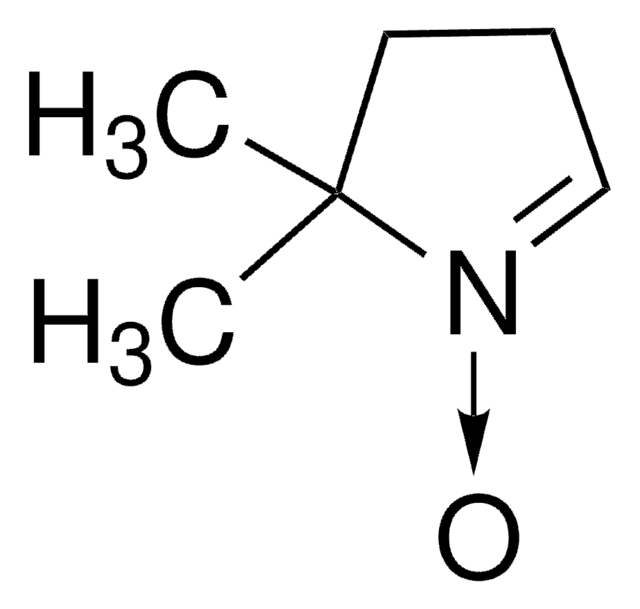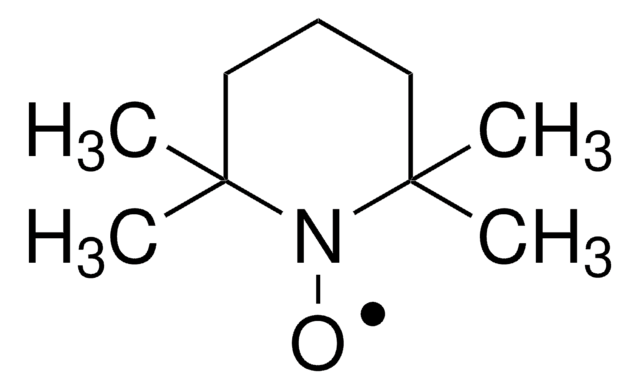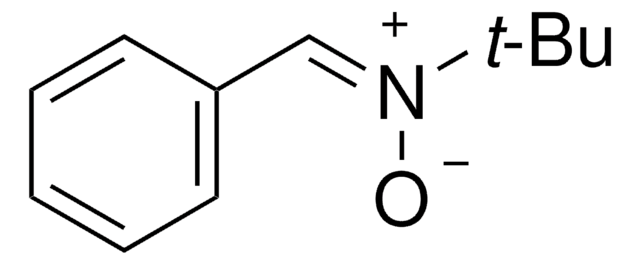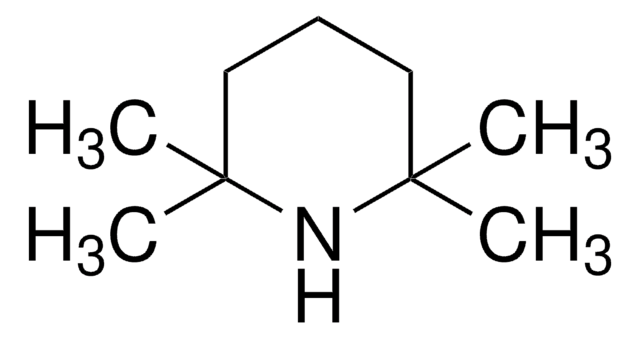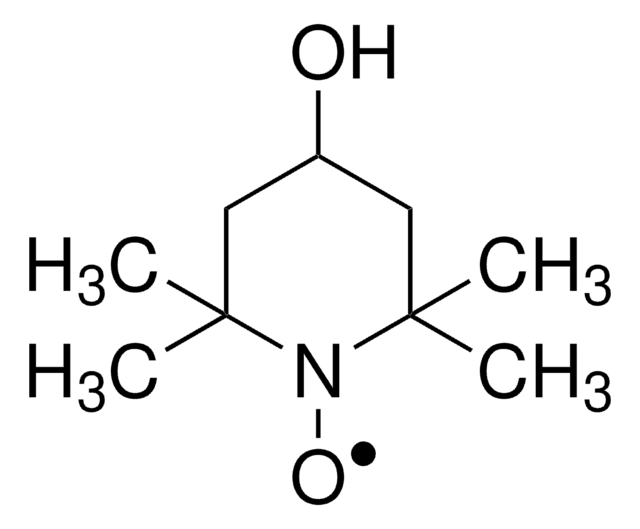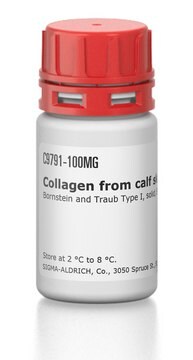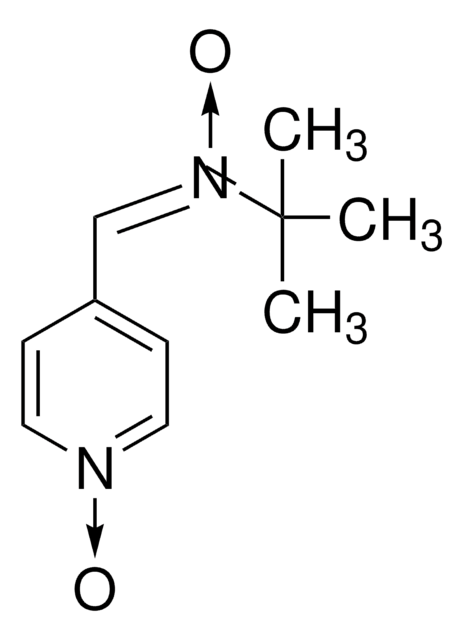D5766
5,5-Dimethyl-1-pyrroline N-oxide
≥97%
Synonym(s):
DMPO
Sign Into View Organizational & Contract Pricing
All Photos(1)
About This Item
Empirical Formula (Hill Notation):
C6H11NO
CAS Number:
Molecular Weight:
113.16
Beilstein:
107603
EC Number:
MDL number:
UNSPSC Code:
12352200
PubChem Substance ID:
NACRES:
NA.77
Recommended Products
Assay
≥97% (GC)
≥97%
form
solid
refractive index
n20/D 1.496 (lit.)
bp
75 °C/0.4 mmHg (lit.)
mp
25-29 °C (lit.)
density
1.015 g/mL at 25 °C (lit.)
shipped in
wet ice
storage temp.
−20°C
SMILES string
CC1(C)CCC=[N+]1[O-]
InChI
1S/C6H11NO/c1-6(2)4-3-5-7(6)8/h5H,3-4H2,1-2H3
InChI key
VCUVETGKTILCLC-UHFFFAOYSA-N
Looking for similar products? Visit Product Comparison Guide
Application
5,5-Dimethyl-1-pyrroline N-oxide has been used as a spin trapping reagent to detect free radicals in electron paramagnetic resonance (EPR) based reactions.
Neuroprotective agent; nitric oxide spin trap. Used to study radicals formed by enzymatic acetaldehyde oxidation. Incubation of lymphocytes with DMPO decreased DNA damage by NiCl2.
Storage Class Code
10 - Combustible liquids
WGK
WGK 3
Flash Point(F)
203.0 °F - closed cup
Flash Point(C)
95 °C - closed cup
Personal Protective Equipment
dust mask type N95 (US), Eyeshields, Gloves
Choose from one of the most recent versions:
Already Own This Product?
Find documentation for the products that you have recently purchased in the Document Library.
Mitochondrial O 2 and H 2O 2 mediate glucose deprivation-induced cytotoxicity and oxidative stress in human cancer cells
Ahmad IM, et al.
The Journal of biological chemistry (2004)
Nanoparticle-induced oxidation of corona proteins initiates an oxidative stress response in cells
Jayaram DT, et al.
Nanoscale, 9(22), 7595-7601 (2017)
Jun Di et al.
Nanoscale, 7(26), 11433-11443 (2015-06-18)
Novel carbon quantum dot (CQD) modified Bi2MoO6 photocatalysts were prepared via a facile hydrothermal process. The CQD modified Bi2MoO6 materials were characterized by multiple techniques. The CQDs with the average size of about 7 nm were distributed on the surface
Xiaoguang Duan et al.
Small (Weinheim an der Bergstrasse, Germany), 11(25), 3036-3044 (2015-03-20)
Sulfur and nitrogen co-doped reduced graphene oxide (rGO) is synthesized by a facile method and demonstrated remarkably enhanced activities in metal-free activation of peroxymonosulfate (PMS) for catalytic oxidation of phenol. Based on first-order kinetic model, S-N co-doped rGO (SNG) presents
Karim Michail et al.
Analytical chemistry, 84(15), 6739-6746 (2012-06-26)
Free radicals are conventionally detected by electron paramagnetic resonance (EPR) spectroscopy after being trapped as spin adducts. Albeit this technique has demonstrated utmost efficacy in studying free radicals, its application to biological settings is intrinsically hampered by the inevitable bioreduction
Our team of scientists has experience in all areas of research including Life Science, Material Science, Chemical Synthesis, Chromatography, Analytical and many others.
Contact Technical Service